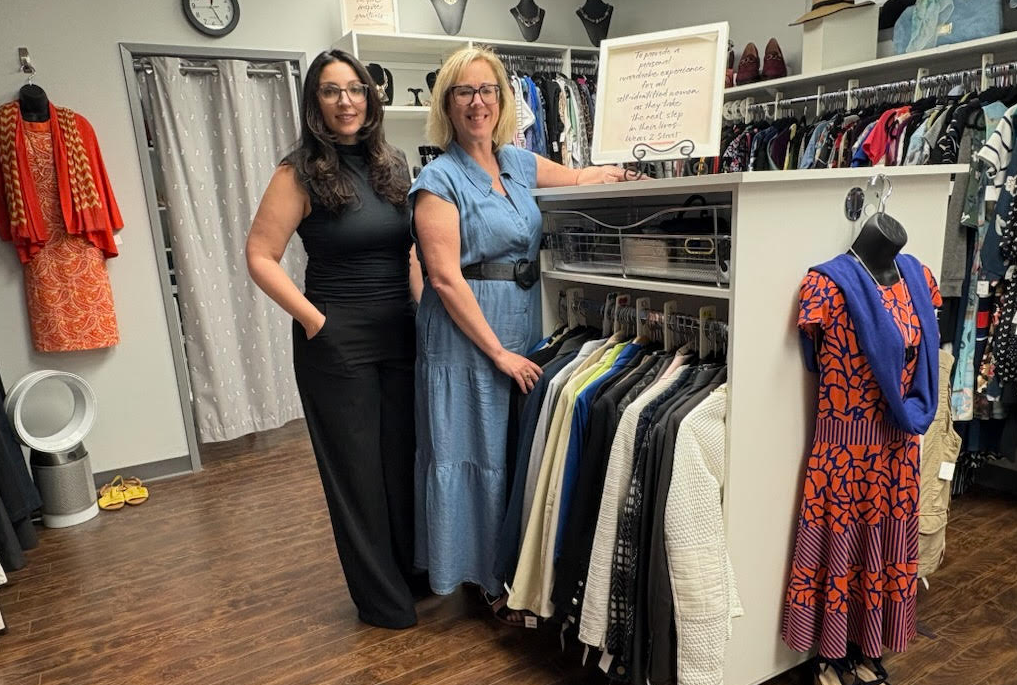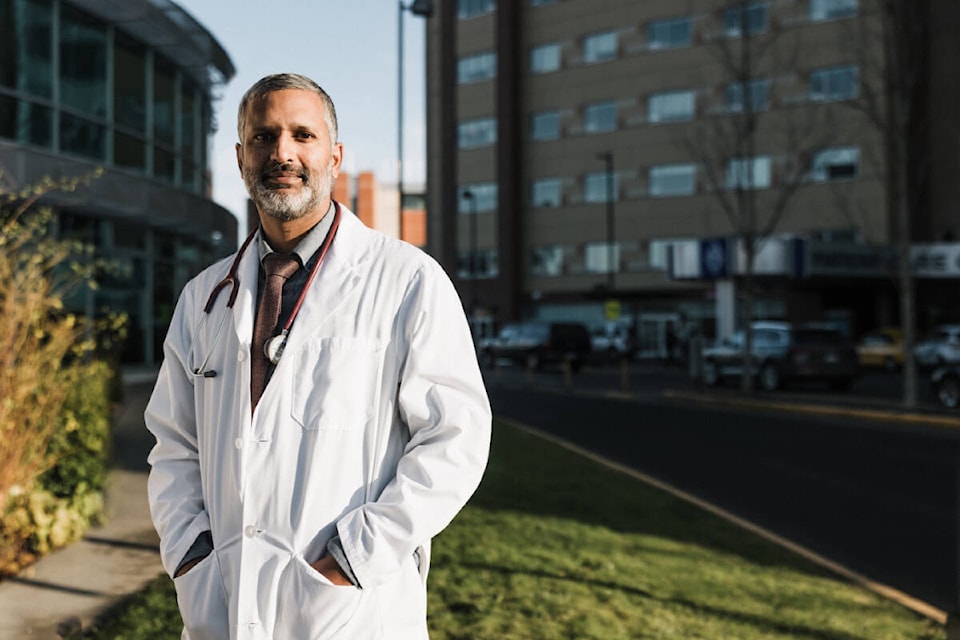“We need to start thinking together and taking ownership of a shared responsibility for our health care, and not just pointing the finger at Island Health, at the province, or at the feds when there’s stuff that we can do on the ground right now,” he said.
He’s gathered a team of doctors, developers, planners, and regular patients to workshop a list of the tools that are available to municipalities. Together they’re writing the manual that they hope will be shared across the province to local governments.
Mark Holland, a former city planner with experience planning healthy communities who has been contracted by Saunders to write the toolkit, says municipalities actually have the most influence on things directly affecting health care workers of all levels of government.
“When we see closures of emergency and hospital rooms in various small communities, it’s not because they don't have a hospital building or emergency equipment—it’s because they don't have anybody to staff it,” Holland said.
“And the stresses on health-care personnel are only partly related to the job. What’s really dragging them down are the cost of housing, the cost of parking, the inability to get childcare for their children at night when they have a night shift, the cost of student loans. That list is pretty much entirely the purview of local agencies and local governments.”
The four core solutions Holland and Saunders talk about are housing, zoning, amenities contributions, and incentives.
“[Local governments] negotiate housing agreements with new developers every day of the week,” he said. There’s no reason why some of them can be targeted to health care workers—especially those who make less money, like medical office assistants, Holland said.
In June, Central Saanich councillor Gordon Newton proposed the municipality look at buying homes and then rent them out to primary care providers at a subsidized rate. His proposal was rejected 5-1 partly because it would be too expensive for the municipality and for fear of unfairly supporting one group while knowing everyone is affected by the housing crisis.
“Just because we have a program for doctors and nurses doesn't mean that nobody else gets housing or extra help,” Holland countered. “I think that emergency personnel and health care workers are a pretty high priority group that we need to keep around.”
Using zoning rules, local governments can make sure clinics are allowed to operate, and require things like affordable housing and adequate daycare spaces. Incentives like density bonuses—allowing developers to build more floor space in the same lot—are often used in exchange for amenities the community wants. Governments could apply similar incentives towards more clinic space or other needs for health care workers. The rules around developer amenity contributions are very flexible, so a government can creatively negotiate with developers to build local health-care support.
“None of the [tools] are a silver bullet, but combined with other local initiatives, we can begin to retain our workers,” Holland said.
Buy-in from councils
What Saunders and Holland are proposing, incumbent Saanich mayor Fred Haynes says the municipality has already been doing under his tenure.
According to Haynes, the University Heights redevelopment will likely include a clinic space at the behest of Saanich council. “They’re negotiating, and it’s a few years away,” Haynes told Capital Daily. “They can't confirm until they put the doctors in, but they do have space they set aside.”
Others, like a new 10-story mixed-use development on Glanford Avenue and a six-storey rental complex at Shelbourne and McKenzie, will also include clinic spaces, according to Haynes. University Heights and several other developments also have daycare spaces built into their amenities packages.
In his past term, Haynes says he used a “carrot, instead of a stick” approach to persuade developers of the benefits of adding clinic spaces to their amenities package, but would take a more firm stance and require these amenities, if re-elected.
Access to affordable housing options for family doctors and primary care providers is something Haynes’s opponent in the mayoral race, Dean Murdock, prioritizes in his approach.
“I would be working with council to ensure that we can create those places that young professionals can afford to move into so that they can have a future here, and they can fill those vacant positions we've got,” Murdock said.
Murdock also hopes to work with nonprofit organizations and Island Health to create clinic spaces for doctors independent of residential developments. “For example, if we were to rebuild the old library site at Cedar Hill and Mackenzie, if we included, in that new build, a space that would be available as a health clinic…Saanich could certainly work with Island Health or a nonprofit health provider in order to create that,” Murdock said.
Victoria mayoral candidates Marianne Alto and Stephen Andrew agree there’s a need to find new ways to attract and retain health-care workers. Andrew told Capital Daily in September that he plans to allow developers to propose free or low-rent clinic spaces as part of their amenities package. He envisions that these spaces would then be turned over to a non-profit, like the Victoria Community Health Co-op, to run.
Alto agreed with this proposal, saying that broadening the scope of the amenities package to allow spaces run by non-profits has been discussed by council many times over the years. Alto expects it will be brought up in next year’s review of Victoria’s Official Community Plan.
She added that her platform includes permissive taxes and benefits for not-for-profits and co-ops for family physicians as well as other health-care workers, like nurses, nurse practitioners, and support staff.
In the last four years, Saanich has also considered offering permissive tax exemptions for new clinics but backed out.
“If you pick new physician clinics to give them permissive tax exemption, what about the existing physicians clinics?” Haynes said. “It's a controversial area for a municipality to give an inherent competitive advantage to one business group over another. That said, I certainly think that having another look at that in the new term would be helpful.”
Incumbent Esquimalt, Mayor Barb Desjardins is ready to look at a host of options to attract health-care workers, from adding designated daycare spaces for physicians’ families, “all the way to specific housing for health-care workers while they work in our community.”
Desjardins highlighted one new development for which the current council has already required clinic space to be set aside: the first two storeys of the Lexi Development at 899 Esquimalt Rd—approximately 4,000 sq. ft.—will be reserved for a health clinic that will have subsidized rent for 10 years.
“There is a lot of space there, so the opportunity of having allied health practitioners as well in that area will be likely,” Desjardins said. “I sort of call that the doctors’ corner because we have the Urgent and Primary Care Clinic across the street that is open now. This one will open up in a couple of years and the potential would be that we would have enough care practitioners within both of those facilities to support our community as it stands now.”
Her opponent in the race has insider knowledge on the needs of health-care workers. Sonya Gracey, former Victoria city councillor, has been a registered nurse for over 20 years. In addition to the other ideas explored by candidates across the region, she says one of the solutions to the health-care crisis lies in cooperative health models, like the Victoria Community Health Co-op, and looking at ways to improve how the Urgent and Primary Care Centre operates.
“Doing things the way we've always done things isn't really working out, so it's about thinking creatively and innovatively about how to support providers to provide service in a way that works for them,” Gracey said. “I don't know exactly where the opportunities are for process improvement at the Primary Care Centre in Esquimalt now, but it would be something that I would be eagerly stepping into if elected.”
Langford mayor Stew Young sees the shortage of doctors as the number one issue facing Langford, but says municipalities can only do so much. He once tried to pay for doctors’ moving expenses to come to Langford. After the city paid for the first of three doctors, the province told Langford to stop because the help was considered “assistance to business.” Young says he and a local developer personally paid moving expenses for the other two doctors who had already agreed to come, but the idea went no further.
“Doctors are a service; I don't believe they're a business,” Young said. “It seemed like a good gesture and it worked, but the city wasn’t allowed to do more. If [the province] got rid of that ‘assistance to business,’ then I'd be able to give a tax receipt for them or reduce their property taxes.”
The non-profit model, similar to Victoria Community Health Co-op, is where Saunders sees the best opportunity, because it allows municipalities to provide financial support without the sticky legalities involved in supporting a for-profit business. He’s working with Langford to develop a pilot project for community-based health care. Young said they’re negotiating with the developer of a 24-storey high rise that was approved earlier this year, The Scene on Peatt Road. Young thinks he can get space in the ground-floor retail portion of the building for a non-profit community clinic like the one Saunders has proposed.
“Langford is not afraid to be part of any solution,” he said.
A different non-profit model recently opened in Colwood, a partnership between a group of local doctors and the Pacific Centre Family Resources Society. The society has been running counselling and family support services for decades, but with the province’s community health care model—essentially a funding solution that supports wraparound care if a non-profit is involved—it was able to expand to primary care. It’s not a walk-in clinic, and doctors are specifically focused on people with complex care needs, including a 400-patient roster from a methadone clinic that closed down at the same time the Westshore Community Healthcare Centre opened.
Colwood has also been advocating for a long-term care facility within the rapidly developing Royal Bay neighbourhood. The proposal is for a dementia village, a model that’s more like a small village than a health-care facility. Island Health has yet to commit to the $224 million project.
While Colwood Mayor Rob Martin advocates for health care, his focus is on coordinating with other mayors to demand more action from the province. That increased support has to be in tandem with population growth and housing development.
“If Colwood is stepping up and providing much needed housing within the region, then the province needs to be stepping up and ensuring that those are doctors to take care of the people we are now welcoming to our community. I feel very, very strongly that this belongs to the province,” Martin said.
“The province is responsible for health care and they cannot be financially downloading that responsibility onto the municipalities. I'm supportive of whatever we can do to support workers and to do whatever we can, as long as it's not costing the municipal taxpayer additional dollars to do it.”









.jpeg)






